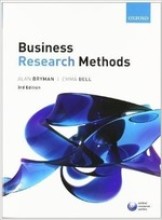Summary: 1Jv10: Organizational Behavior For Industrial Engineering
- This + 400k other summaries
- A unique study and practice tool
- Never study anything twice again
- Get the grades you hope for
- 100% sure, 100% understanding
Read the summary and the most important questions on 1JV10: Organizational behavior for Industrial Engineering
-
1 Topic 1: Job Analyses and Work Design
This is a preview. There are 1 more flashcards available for chapter 1
Show more cards here -
1.1.1 Abstract
This is a preview. There are 1 more flashcards available for chapter 1.1.1
Show more cards here -
A framework is used to summarize the direct and indirect ways in which work design is shaped, what are the three dimensions?
- Higher-level external context
- Organizational context
- Local work context
- Individual factors
- Higher-level external context
-
1.1.3 Mainstream research - How work design affects outcomes
This is a preview. There are 1 more flashcards available for chapter 1.1.3
Show more cards here -
There are five key work design perspectives:
- Sociotechnical systems thinking
- Job characteristics theory
- Job-demand control model
- Job demands resources model
- role conflict and role ambiguity
-
Sociotechnical systems thinking and autonomous work groups:
- Advocate that the design of work should optimize technical and social aspects of the work situation, rather than prioritize the technical part (autonomous teams are important)
-
Job-demand-control model:
- Closely relates to the job characteristics perspective
- Job autonomy and skill variety are combined into job control and the factors are considered in interaction with demands such as time pressure
- Leads to strain inducing jobs with high demands and low control, and healthy jobs
- Closely relates to the job characteristics perspective
-
Job-demands resources model:
- Includes resources other than job control and an array of demands such as challenge demands and hindrance demands
- Includes resources other than job control and an array of demands such as challenge demands and hindrance demands
-
Role conflict and role ambiguity:
- Are two key types of stress incurring role disfunction and these are thus integrated into work design research
- Are two key types of stress incurring role disfunction and these are thus integrated into work design research
-
1.1.4 Overview of work design influences
This is a preview. There are 3 more flashcards available for chapter 1.1.4
Show more cards here -
Proximal processes that shape work design:
Drawing on the ability-motivation-opportunity model of behavior, work design decisions by formal authority are shaped by their:- Motivation
- KSA
- Opportunities
-
Multilevel Influences and their mechanisms:
- Individual
- Contextual
- Local context influences
- Organizational influences
- Higher-level external influences
- Individual
-
1.1.5 Higher level external influences
This is a preview. There are 2 more flashcards available for chapter 1.1.5
Show more cards here -
Three categories of influence that are external to the orgnization are:
- International/global influences
- National influences
- Occupational influences
- International/global influences
-
International/global influences:
Globalization and market liberalizations indirectly affect work design through international supply chains
- Higher grades + faster learning
- Never study anything twice
- 100% sure, 100% understanding
Topics related to Summary: 1Jv10: Organizational Behavior For Industrial Engineering
-
Job Analyses and Work Design - Article: Work Design Influences: A Synthesis of Multilevel Factors that Affect the Design of Jobs
-
Job Analyses and Work Design - The models that made job design
-
Job Analyses and Work Design - Current Theoretical Perspectives in Work Psychology - THE JOB DEMANDS-RESOUCES MODEL
-
Job Analyses and Work Design - Current Theoretical Perspectives in Work Psychology - THE DEMAND INDUCED STRIAN COMPENSATION MODEL
-
Job Analyses and Work Design - Job crafting
-
Work times and recovery from work - Article: shift work: consequences and management
-
Safety and behavioral risk management - The bounds of classical risk management and the importance of a behavioural approach
-
Individual and team performance - Teams at work
-
Vitality and occupational health - Burnout, Boredom and Engagement in the workplace
-
Vitality and occupational health - Job satisfaction, motivation and performance
-
Labor relations, fairness and negotiations - Article: The psychology of negotiation
-
Labor relations, fairness and negotiations - Article: Negotiation Engineering: A Quantitative Problem-Solving Approach to Negotiation
-
Labor relations, fairness and negotiations - Organisational and procedural justice: a review of the literature and its implications for policing
-
Designing (online) talent management interventions - Article: The potential of job demands-resources interventions in organizations
-
Work-life balance/interaction - Article: A closer look at the key concepts of the work-nonwork interface - Enrichment: construct definition and measurement
-
Work-life balance/interaction - Article: The Work-Family Interface: A Retrospective Look at 20 Years of Research in JOHP
-
Work-life balance/interaction - Work-family interaction - Basis concepts of work-family interaction
-
Work-life balance/interaction - Work-family interaction - Theoretical models of work-famliy
-
Work-life balance/interaction - Work-family interaction - Work-family interaction: antecedents and outcomes
-
Work-life balance/interaction - Work-family interaction - Ways of dealing with work and family demands
-
Digitization and industry - Article: Holistic approach for human resource management in Industry - THE ROLE AND IMPORTANCE OF HUMAN RESOURCE MANAGEMENT FOR THE CORPORATE STRATEGY
-
Digitization and industry - The design and use of work technologies































